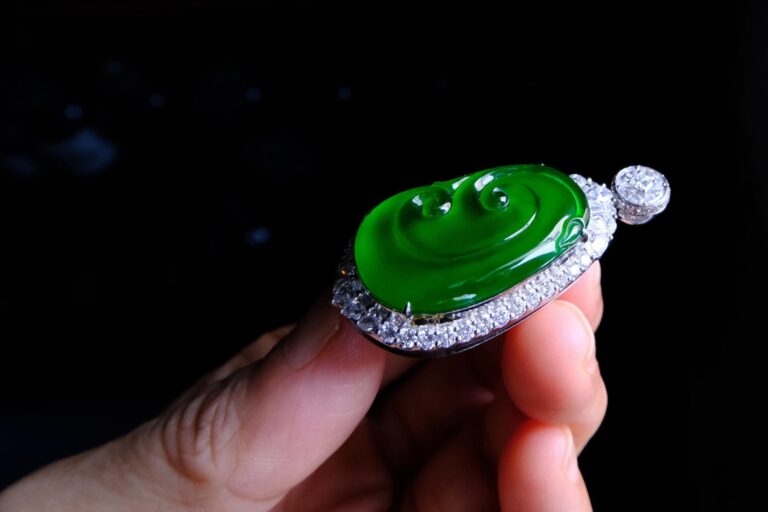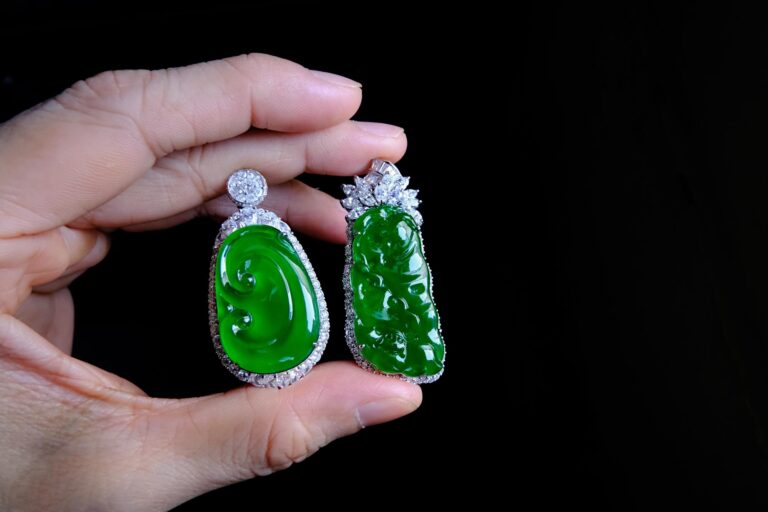翡翠危料是什么意思 (Burma vs Guatemala Jade)
If you have looked at the jadeite retail market recently, you may have noticed an influx of highly translucent, imperial (or close to imperial) green jadeite pieces sold at much cheaper prices than we are used to seeing.
While these pieces might well be untreated jadeite, they are not from Burma. If they are highly translucent/full green/imperial green, and sold at cheaper prices, they are NOT Burmese jade. These are jadeite pieces from Guatemala.
Until recently, Guatemalan jadeite used to only be the blue-green variety that was a tell-tale sign of its origin. In the last 5 years, and particularly accelerated in the past year (2023-24), large quantities of high quality jadeite has been found in Guatemala. These are near flawless to flawless, with attributes of highly translucent/full green/imperial green.
It is no wonder that “imperial jade” has become affordable overnight.
Guatemalan jadeite is beautiful. They are superbly clean, and therefore able to display the vividness of emerald green in a flawless way, even more so than most Burmese jade specimens. But they will flood the market at some point (already) and this means Guatemalan jade is not uncommon, however pristine.
Politically, and geologically, there is just not enough Burmese jadeite rough that will produce highly translucent/full green/imperial green pieces in order to make it affordable for the wider market.
The problem is that many dealers are selling Guatemalan jade without revealing the origin, either because they are retail dealers downstream who do not know, or direct dealers who do not want wish to reveal a fact to their customer for fear of losing a deal.
State of Jade Assessment by Gem Labs
The market situation we described above is made worse by the current limbo that jade is facing with international gem labs.
NOMENCLATURE
They have recently come to a consensus that Type A Jadeite will be renamed “Fei Cui” for two reasons:
- Jadeite is a traditional Chinese stone, and Fei Cui has always been its Chinese name.
- What we call jadeite is usually a composite of a few minerals, jadeite being only one of them. For accuracy, it is best to call the stone another name that includes all the minerals. The name that was settled on is, for now, Natural Fei Cui.
ORIGIN
As of August 2024, the only international gem lab that will state the geographical origin of jade is SSEF. SSEF is an expensive lab, and quite a hassle to submit gemstones to. This is out of reach for most consumers, who might be buying a piece for a few thousand dollars.
Therefore, if you insist on only buying Burmese jadeite, buy from a source who knows or a dealer who will reveal, or pay for an expensive gem report. For now, gem reports from Chinese labs should not be relied on; it is very easy to produce a fake report.
All this will not matter if you don’t care about the origin of your jadeite, and you just want to buy a beautiful and natural green piece of jade.
Part 2 of this PSA will deal with the fakes and THE REAL FAKES. It gets exciting!

